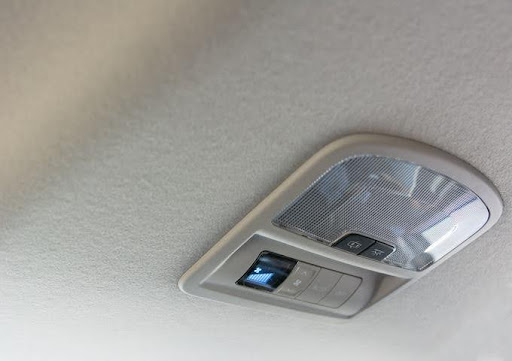When homeowners consider overhead openers vs. wall-mount garage systems, they’re choosing between a ceiling mount and versus wall mount garage door opener setup. Understanding this wall mount garage door opener vs ceiling mount dilemma helps clarify installation, space, and performance differences. The debate over overhead openers vs. wall-mount is more than technical—it’s about convenience.
What Defines an Overhead Opener?
An overhead opener is installed on the ceiling above your garage door track. These units use a trolley and rail system to lift your door. For many households, overhead openers vs. wall-mount remains a familiar classic. Ceiling mount garage door opener systems are well-established, reliable, and easy to locate during repairs.
What Defines a Wall-Mount Opener?
A wall-mount opener attaches directly to the garage wall beside the door. Using a jackshaft design, it operates without a ceiling track. Choosing between overhead openers vs. wall-mount means choosing between a traditional ceiling mount and an innovative floor-space-saving design. Wall-mount garage door openers create a clean, modern look with quiet operation.
Space Utilization and Installation
Overhead openers vs. wall-mount differ most in space requirements. Overhead openers need a clear ceiling area for rails and the motor. In contrast, wall-mount units free that ceiling space. For tight garages, the wall mount garage door opener vs ceiling mount choice favors wall mount.
Noise Levels Compared
Traditional overhead openers can be noisy as the motor runs above you. Wall-mount systems use smoother belts and fewer moving parts. In overhead openers vs. wall-mounted comparisons, wall-mounted units often deliver quieter performance.
Power and Weight Capacity
Overhead openers vs. wall-mount models vary in horsepower and torque. Ceiling mount garage door opener systems typically support heavy doors. Wall-mount openers are rated by torque and can handle most residential doors, but high-lift models may need overhead units.
Safety Features
Both overhead openers vs. wall-mount designs offer modern safety features like auto-reverse and motion sensors. Wall-mount openers, due to simpler mechanics, may have fewer failure points. This makes the wall-mount garage door opener vs the ceiling mount appealing for users prioritizing reliability.
Pros of Overhead Openers
- Familiarity: Well-known by installers and homeowners.
- High lift capacity: Great for heavy or double doors.
- Accessory-ready: Easy to integrate lights, battery backups, or Wi‑Fi features.
Pros of Wall-Mount Openers
- Space-saving: Clears ceiling beams and lighting fixtures.
- Quiet operation: Belt drive and direct mechanics reduce noise.
- Aesthetically pleasing: Sleek motor design blends with wall.
Cons of Overhead Openers
- Ceilings must remain unobstructed.
- It can be loud or vibrate.
- Installation may interfere with attic access.
Cons of Wall-Mount Openers
- Torque limits might not suit very heavy doors.
- Requires strong wall anchoring.
- Fewer accessory options on some models.
Cost Comparison
On average, overhead openers and wall-mount units are competitively priced. Wall-mount openers sometimes cost more due to newer technology. Overhead openers vs. wall-mount installations both involve labor and unit cost, though ceiling mount garage door opener pricing may be slightly lower.
Maintenance Needs
Overhead openers require rail and belt maintenance. Wall-mount models require less routine service due to their simpler design. When comparing overhead openers vs. wall-mounted longevity, wall-mounted options often need fewer part replacements over time.
Selecting the Right Opener for Your Garage
Assess your garage layout and roof structure for ceiling clearance. If the ceiling is low or attic access is required, wall-mount units are ideal. For big or heavy doors, overhead openers vs. wall-mount may lean to ceiling mount. Factor in noise, price, and maintenance in the overhead openers vs. wall-mount decision.
Real-World Scenarios
- Low-ceiling two-car garage: Wall-mount frees ceiling space.
- Heavy insulated garage door: Overhead opener offers significant horsepower.
- Shared attic space above garage: Wall-mount avoids ceiling intrusions.
Installation Tips for Overhead Openers
Ensure the ceiling framing supports the weight of the opener. Keep clear of HVAC ducts and light fixtures. Regularly inspect rails for alignment.
Installation Tips for Wall-Mount Openers
Anchor securely to a load-bearing wall. Follow torque calibration carefully. Verify cable alignment and door balance.
Warranty and Support
Major brands offer 5 to 10-year warranties for both types. Wall-mount designs may have shorter warranty terms initially, but support is rapidly improving. Warranty considerations weigh equally in overhead openers vs. wall-mount choices.
Energy Efficiency
Overhead openers often include built-in lighting. Wall-mount units rarely feature integrated bulbs, but consume similar electricity. Both options support LED lights and energy-saving standby modes.
Technology and Connectivity
Smart opener features (Wi‑Fi, app control, camera integration) are available in both categories. Overhead openers vs. wall-mount: ceiling mount may offer more accessory add‑ons, yet wall-mount models increasingly match tech offerings.
Summary
When differentiating overhead openers vs. wall-mount systems, consider ceiling clearance, noise level, door weight, and ease of installation. Ceiling mount garage door opener systems are tried and tested. Wall-mount openers excel in compact and quiet setups. In the end, homeowner priorities determine which option “wins.”
FAQs
1. Are wall-mount openers quieter than overhead openers?
Yes. Wall-mount openers use belt drives and fewer moving parts, making them significantly quieter than many overhead openers.
2. Can wall-mounted openers handle heavy garage doors?
They handle most residential doors. But extremely heavy or oversized doors may demand the power of overhead openers vs. wall-mount units.
3. Which option saves more ceiling space?
Wall-mount openers clear all ceiling tracks, freeing attic access and overhead lighting space.
4. What is the approximate cost difference?
Wall-mount openers typically cost slightly more upfront, but installation prices for both are similar, depending on labour and features.
5. Which system requires less maintenance?
Wall-mount openers generally require less routine maintenance due to simpler mechanics compared to overhead counterparts.
